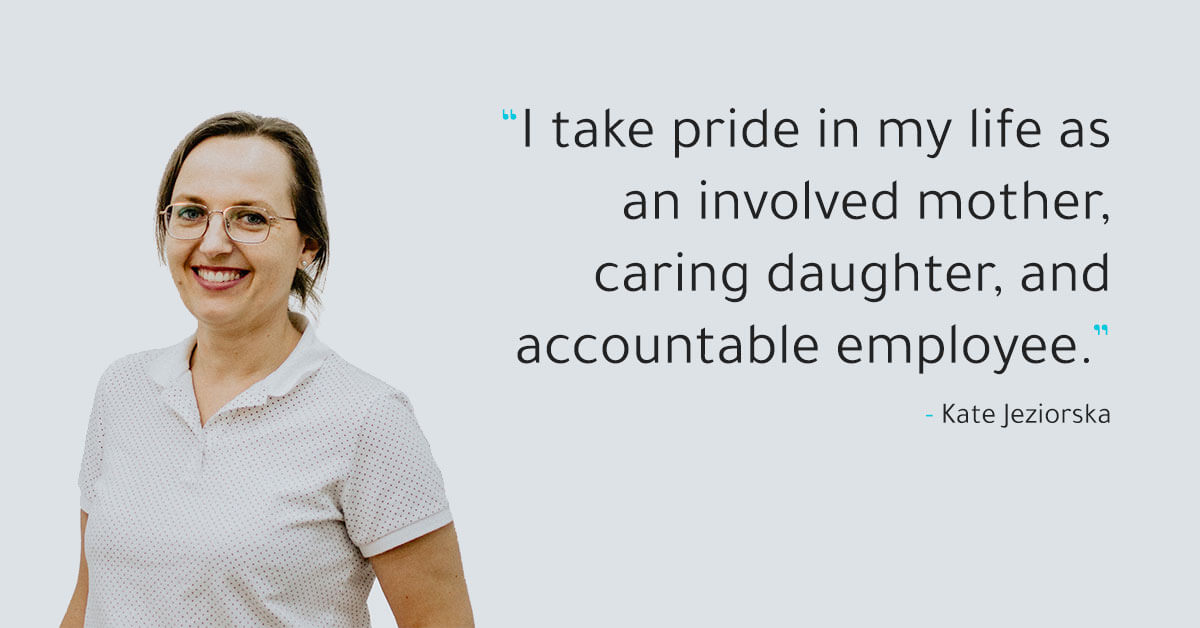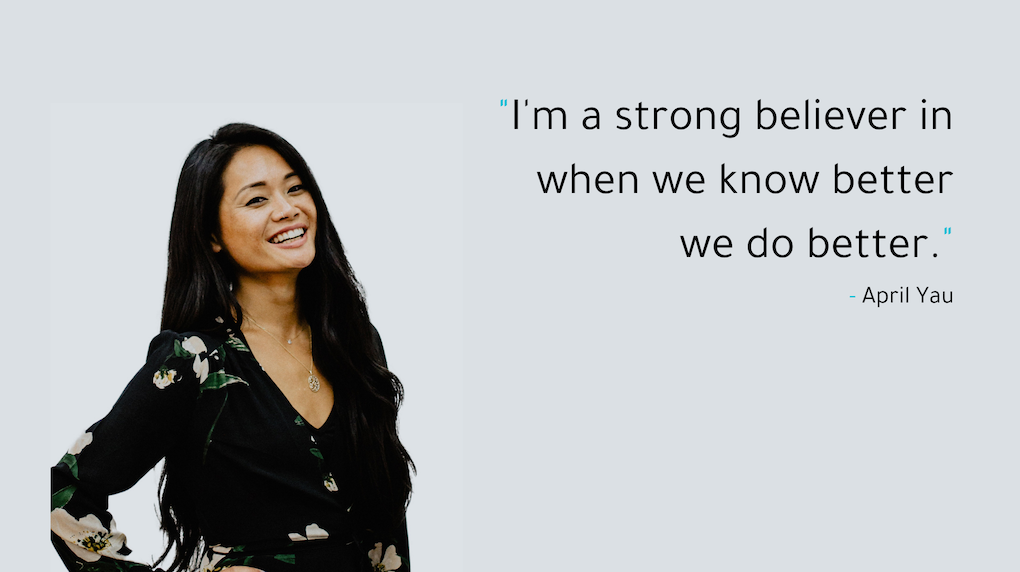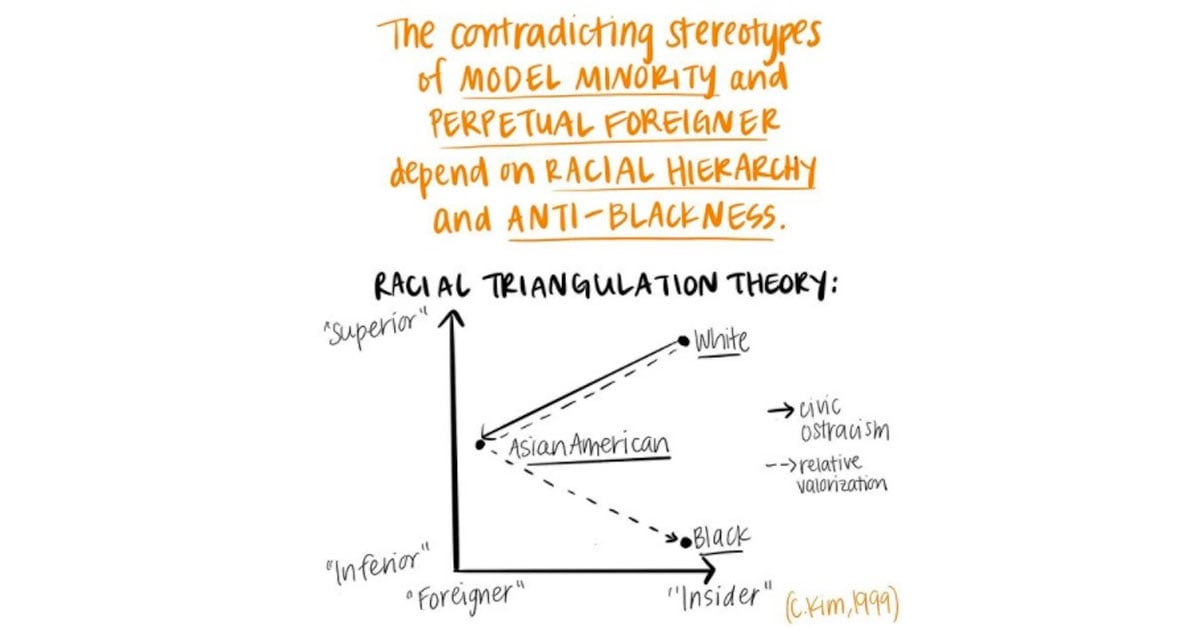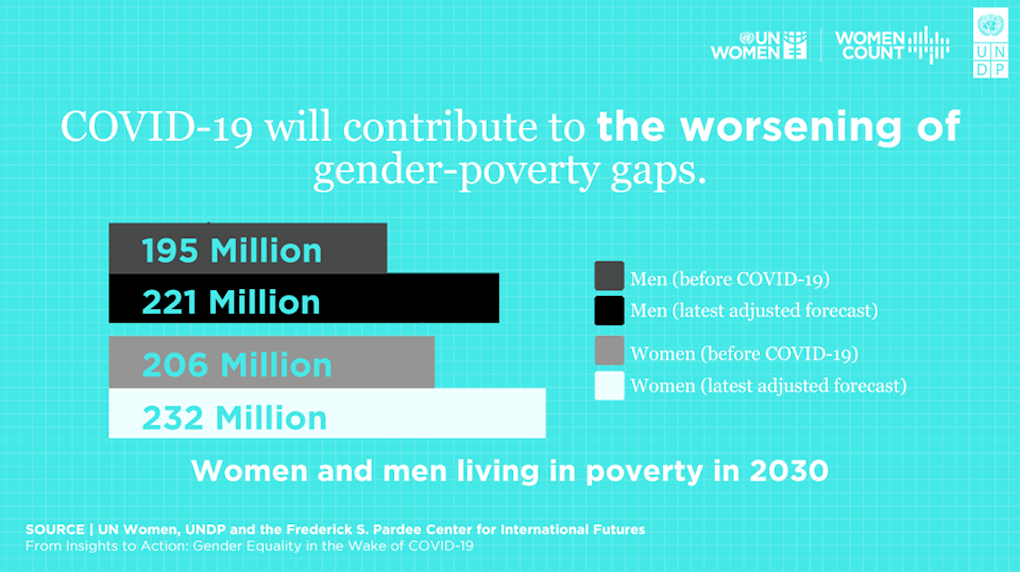What does it mean to be a woman in the workplace? While the answer has changed vastly throughout the years, this International Women’s Day, we asked three of our team members from different backgrounds and departments to share their experience in their own words.
By giving our employees a platform, we sought to understand the unique challenges they face and dive a little deeper into the issues. Even in 2021, as we’ll share, the statistics are startling and it’s clear we need to do more. While we’re all learning how to improve the workplace for women, we’re happy to share our own initiatives and recommendations on how to be the positive change we want to see in the world.
Carolina Horna, Social Media Account Manager
Growing up in an immigrant household, I was taught if you were tough, professional and worked hard, your efforts would be recognized and success would follow. While this instilled a great work ethic in me, it didn’t address the nuance and struggle of a visible minority and a woman. At the same time, there was a lack of representation of females and/or BIPOC professionals in positions of power.
As a result, I moved through the early part of my career with a misguided interpretation of what it meant to be strong and what it took to be a leader. So, I was unwilling to speak up, ask for help, and I was terrified of confronting my superiors for fear of crying, exposing myself as an imposter, and appearing weak. Such thoughts can be paralyzing and before long, I found myself frustrated, feeling stuck and at odds with my “softer traits”.
However, my definition shifted after a discussion with my mom where I learned of her own experiences with the glass ceiling. Despite a long career full of hard work and experience, an executive role “just never happened for [her]”, all because “no one ever saw [her] in that light.” Her answer broke my heart and it made me question whether she’d been unknowingly subjected to racism or bias, and was I a victim of either?
As a woman and a POC, it’s not always enough to work hard. At times, you feel the pressure to work harder because it doesn’t feel like you belong, so you believe you have something to prove. It’s Imposter Syndrome x2. But, what do you do when that hard work can only take you so far?
At some point, you need the bias recognition and support of others to advocate on your behalf and to lift you up past the proverbial glass ceiling. This inspired me to be more vocal and vulnerable. I figured, only by opening up could anyone begin to understand my struggle, help me grow, and uncover their own biases. In time, I started to value this vulnerability as a strength and bravery rather than appearing weak and a fraud. I couldn’t be this open without a safe environment and I feel grateful to have a team that embraces this approach and supports my honesty.
Kate Jeziorska, Support & QA Account Manager

I am a mom of two boys and I changed my career path at 40 years old when I immigrated to Canada to start a new chapter. Last summer I moved back to Poland to stay closer to my elderly parents and I continue to work at Major Tom – the first company that believed in me when I made a career leap two years ago.
Mothers with school-aged kids are usually the first to “fall out” of the labour force. It’s not easy if you must manage endless sick days, remote learning and be a committed worker at the same time. It is easy to be labeled as underperforming. Plus, try not to feel pressure when there is a 9-hour time difference between you and the team. Yet, this has never been an issue at Major Tom.
I am unafraid to be vulnerable in front of my colleagues. Yes, there were times when I cried in front of them. I felt stretched thin because the pandemic added to the stress and the pressure I was feeling got so intense. My team answered with understanding and support. They encouraged me to show my emotional side and take care of myself. As the pandemic and the stress from it continues, Major Tom ensures that everyone at the company has adequate mental-health programs and resources to deal with these unique challenges. They’ve certainly made it easier for everyone to work.
I take pride in my life as an involved mother, caring daughter, and accountable employee. I could not do it without support from my agency.
April Yau, Group Director Account Services

It’s been an interesting journey exploring the intersectionality of being a first-generation Chinese-Canadian woman. The recent exponential rise in anti-Asian crimes was the catalyst to facing the shame and confusion around my cultural identity. It was only when I learned about the model minority myth and racial triangulation theory that I finally felt truly seen. Asians are in a strange place of relative valorization (superior vs inferior minorities) but also civic ostracism, being seen as the “perpetual foreigner” (vs insider). We’re more [seemingly] accepted into white society because we’re not viewed as threats, which is a privilege in its own way. Compounded with the lack of positive Asian representation growing up, my (sometimes unconscious) desire to increase proximity to whiteness for power was exposed. This is all built on a system of racial hierarchy and anti-Blackness.

That was my ah-ha moment – it explained how I felt for so long but couldn’t articulate. I didn’t feel Asian enough or white enough. There was shame around deliberately disassociating from my heritage and trying to fit in, which directly impacted how I showed up at work: feeling in between two worlds and feeling never enough. Speaking with many other first-gens of diverse backgrounds, our stories, challenges, and experiences are similar – especially for WOC when it comes to our professional lives.
Despite any of the above, I am extremely lucky that I’ve never felt inferior in my industry or place of work. I was fortunate to have the support and opportunity to rise through the ranks at Major Tom and eventually live out the dream of moving to NYC for agency expansion. It wasn’t until I attended a Google conference in 2016, where I realized my story wasn’t the norm. At a networking event, a male attendee was surprised to hear my team at the conference was all female and even more surprised to learn our agency was mostly female including a majority of the senior leadership team! Until then, I thought our agency was “normal”, not the exception, and had no idea the industry was so male-dominated.
As a self-proclaimed “status quo challenger”, I am proud to lead the DEI committee at our company and am grateful to have a senior leadership team who are active, invested and willing to improve. You don’t know until you know and I’m a strong believer in when we know better, we do better. We may not get everything right but the important part is striving for improvement – to learn and unlearn.
The numbers
Leadership roles
Carolina, Kate and April’s experiences are anecdotal, but they are by no means isolated or unique, and the numbers support their observation. Imposter Syndrome is common in the workplace but predominantly experienced by women. It’s easy to see why. In Canada alone, only 4% of CEOs are women and only 19.6% of board seats are held by women. To help put this in perspective, in the S&P 500, there are nearly more Chairs of the Board named John than there are female Chairs. Additionally, Dr. Sarah Kaplon, a Professor of Gender and the Economy notes that for every 100 men promoted to a managerial position, only 79 females will be promoted to manager.
Women of color
If the statistics seem drastic for women, then they’re even more alarming for women of color. Visible minority women, especially first-generation immigrants, earn on average $5,000 less than non-visible minority women, and $7,000 less than visible minority men (Gender and the Economy).
COVID’s impact
“It is no longer a silent crisis. Covid has ripped the band aid off.”
(Source)
While there have been many strides for gender and racial equality in the workplace, the pandemic revealed there is still much work to be done, especially for mothers. In the US alone, more than 860,000 women dropped out of the workforce in September 2020 compared with 200,000 men. As reported in the Harvard Business Review: “Women do an average of 75% of the world’s total unpaid-care work, including child care, caring for the elderly, cooking, and cleaning. As Covid-19 has disproportionately increased the time women spend on family responsibilities, women have dropped out of the workforce at a higher rate than explained by labor-market dynamics alone.”

Resources
The numbers can be overwhelming and the way forward unclear. How do we begin to tackle all the societal pressures, expectations, and biases passed down from generation to generation? As with any movement, education and communication is at the root of our recommendations. Here are some methods to integrate learning and spark conversation.
TED Talks
Whether your company devotes a month to learning or creates a year-long practice, consider screening empowering and enlightening speakers that touch different parts of the female experience. For instance, this month, our team set up a lunch event once a week to watch these TED Talks together:
Surveys
Ignorance may be bliss, but it’s detrimental when trying to enact change. Surveying employees on a consistent basis helps executives stay aware of employee thoughts, struggles and helps to spark dialogue, measure, improve and track progress. In our own experience, it helps to give employees the option to remain anonymous. It can be an uncomfortable process, but the feedback is ultimately worth it.
Flexible Working Structure
If the pandemic has taught us anything, it’s the importance of flexibility. Parents, especially working moms, need the flexible hours or the ability to work from home in order to return to the workplace in full force. Implementing flex hours (ie. start times between 8-10 am) can have a positive effect on employees who may otherwise need to start later or end later due to parental responsibilities. Furthermore, continuing the work from home option is a great way to remain flexible. This past year, our agency went fully remote and to our pleasant surprise, everything continued to run smoothly.
Diversity, Equity and Inclusion Committee
In the wake of the Black Lives Matter movement, DEI committees are on the rise. DEI committees are a proactive method to engage employees, facilitate company-wide education sessions (we recommend AndHumanity) and promote dialogue. While normally started by employees, it’s important for senior leadership to participate since they are decision-makers and stand to benefit from the discussions. Admittedly, our DEI committee formed last year, but we were proud to see the involvement of our president, Miles Sellyn, who is an active member.
Women of color in leadership roles
Women of color are usually underrepresented in professional, high-status jobs. Although the proportion of women in executive roles has slightly increased over the last five years, women of color haven’t experienced the same progress. It’s important to recognize this and realize that organizations do have the power to create a more inclusive and equitable leadership team. Improving hiring processes and professional development programs is a strong start in bridging the gap. Having a balanced representation of gender and race in leadership not only has a positive impact on a company’s performance, it also acts as a catalyst for change. The more women of color see those like them in higher positions reinforces the fact that they too can achieve that position.
For more ideas into how companies take positive steps forward, we recommend reading this article.
It’s never easy to open up about personal experiences, so we applaud our team for stepping up and sharing their unique perspectives.
Our CEO, Lyn Bryan, recently said, “The power and strength of being a woman is in knowing that you can rely on other women in your life to support and stand up when you just don’t have the energy to engage.”
We wholeheartedly agree and would add that in addition to supporting women, having supportive men on staff who stand up and speak out to challenge the status quo is also necessary. Only by engaging and empowering our teams can we hope to learn and understand what and where the problems reside. It also helps us identify solutions and areas to improve the workplace for current and future women in business. The work isn’t easy, but it’s important and we invite you to continue learning and improving with us.